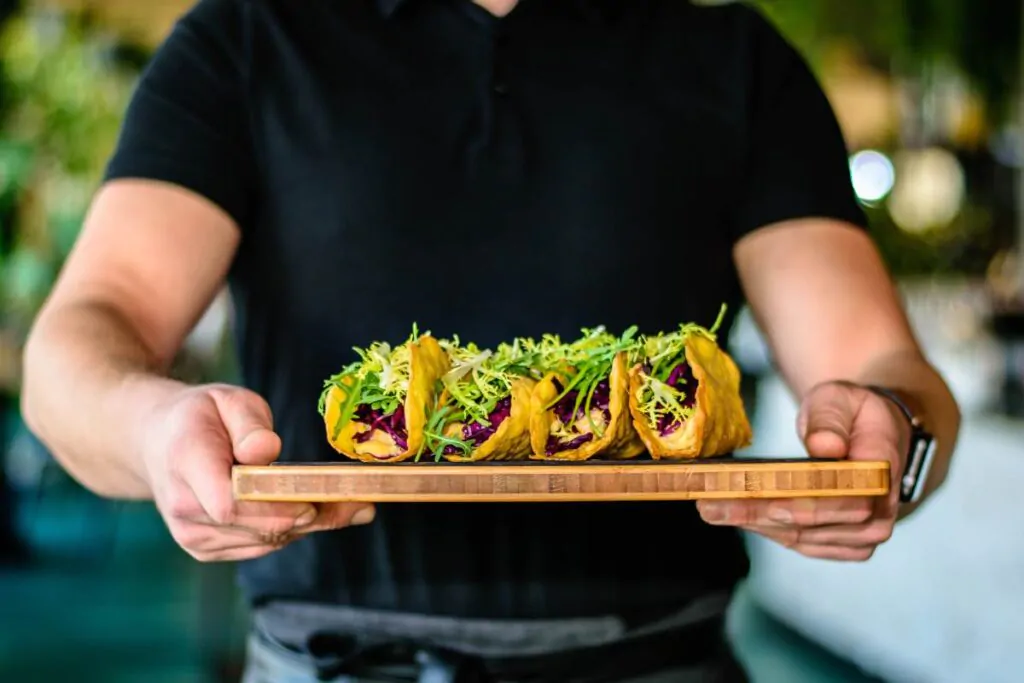Writing about food can be a lucrative option, but this type of writing has its own style and tone. Check out our guide with tips to get your food writing journey started.
Few things in the world are universally appealing, but food is. Everyone eats, from the smallest child to the most wealthy business tycoon. If you want to write something everyone has a reason to read, consider writing about food.
While it’s true that everyone needs food, not everyone gets to eat or cook good food. Quality cuisine is a delicate art beyond the simple need to feed one’s family. From home cooking to the top restaurants in cities like New York and Los Angeles, food and cooking can be more than just something you do to sustain the people around you. Writing about food is a way to capture people’s love of food and transform it into a venture to make money.
From cookbooks to food blogs and food travel writing, food writers capture people’s love of food and turn it into good writing. They provide practical tips to cook easier or better, and they provide a way to live vicariously through someone else’s culinary experiences. This article will provide five tips that new and experienced food writers can use to make their articles and personal essays as effective as possible.
Contents
1. Choosing a Food Topic

Before you can start food writing, you must first decide what you’ll write about. This begins with defining your audience. Is your audience home cooks, food critics, foodies or someone not in the food industry who wants to know the best burgers in your town? Carefully define your audience, so you can narrow down your writing to fit.
When you know who you are writing for, you can have a better understanding of what you will write. The most successful food bloggers are those who have a relatively narrow niche that appeals to their specific audience. Some ideas include:
- Writing about a specific type of food, like ethnic cuisine or allergen-friendly food
- Writing about local restaurants, including restaurant reviews
- Writing to a specific audience, such as those interested in cooking for families on tight budgets
- A unique angle for creative writing about food, such as shocking foods from around the globe
Once you know who you’re writing for and what you’re writing about, start researching and gathering information on that topic. Gather enough research to write several articles to launch your blog or column. You’ll need to keep researching to add to it but start with a solid foundation of information. If your research involves personal experiences eating or cooking a dish, make sure you take pictures to document it. You’ll need these later when you publish the piece.
2. Writing Style and Tone
Next, consider the writing style most appropriate for your food audience. Blogging on a certain kind of food or cooking style will require a short, punchy tone, while writing a nonfiction book on food history may allow longer sentences. Blogging requires conversational writing with contractions and slang. Print publications and articles for newspapers may not. What is a conversational tone? Find out in our guide!
The tone of your writing is very important to make a connection with your reader. Are you writing nonfiction that will inspire change in your readers, like Michael Pollan has done with his books on using food as a form of healthcare? Then you’ll want a serious and authoritative tone. Are you writing a humorous article about unique gastronomy around the globe like Anthony Bourdain? Then a more sarcastic tone is appropriate.
No matter the style and tone, writing about food requires descriptive language. Your writing must show the reader how the food tastes, looks and smells. Similes that draw comparisons between things the reader knows and the unknown food can work well, and sensory words make writing more appealing. Avoid clichés and over-used food words like “delicious” and “tasty” in your writing.
3. Structuring Your Article

Before you begin writing, make a plan. Create a general outline that will guide your writing. Remember that outlines can change, but they’re a good starting point. In your writing, especially if you’re writing for an online audience, use subheadings to guide the reader through the piece. Subheadings make the piece easier to scan and help readers navigate to the exact part of the article they want to read.
Finally, use pictures to break up text and create visual aids. Eating and enjoying food is an experience that involves most of the senses, including the eyes. Have pictures of the foods you’re discussing to draw in the visual sense while you use words to describe how the food tastes, smells and even sounds.
4. Adding Personal Touches
Eating is a highly personal experience; the best types of food writing bring in personal experiences when possible. A food critic will describe their experience eating a particular food. A food blogger will explain what happened when they attempted a recipe, what went wrong and what they would change next time. A food travel writer will share personal stories of their encounters with exotic foods.
As you share your personal stories, weave in sensory language. The reader should walk away from the piece knowing how the food tastes, sounds, smells and looks. For example, you could say:
“The waiter brought a plate of sizzling meat and vegetables to the table. The steam from the plate wafted up, carrying the pungent scent of chilis and onions. The first bite sent a burst of flavor into my mouth, including the traditional Mexican spices and a hint of lime. The soft texture of the tortilla was a pleasing contrast to the crisp veggies.”
This excerpt brings in smell, taste and sound. It also brings in some visual elements because the reader can picture the plate coming to the table. Even though it doesn’t say so, the plate is a plate of fajitas.
Here is another expert from a restaurant review published by Hannah Goldfield in The New Yorker. Notice how the writer uses the names of foods and descriptive words like “juicy” and “sweeter” to delicately draw in more senses.
“Juicy chunks of boneless chicken, marinated in saffron and lemon juice. Rice was wonderful mixed with Rejali’s yogurt dips: the thicker, more sour mast mosir, made with Persian shallots and nigella seeds, and the sweeter mast khiar, with cucumber, raisins, sunflower seeds, dried mint, and dried rose petals.”
If it applies to your food experience, include cultural context. This personal touch is particularly important if you’re writing about international food options. Tell the reader why the food is so important to the culture of the people you’re visiting, or explain the cultural elements surrounding the meal. For example, if you’re dining in someone’s home in Asia, and you’re seated on a cushion on the floor rather than at a table and chairs, weave that fact into your narrative.
5. Editing and Revising
Now that you’ve written your piece, the work isn’t done. Before you publish it, you need to review and revise it. Start this with some apps, like Grammarly, to check grammar and clarity, but don’t stop there. You’ll also want to read through your piece personally or have someone else review it. Check out our Grammarly review. Even if you don’t find grammar issues, you’ll find something to adjust to make the piece easier to read or understand. Make it clear, concise and powerful by reviewing and revising thoroughly.
Keep in mind that proofreading your work is tough! Consider seeking feedback from others. Hire an editor or a proofreader to read through the piece for you. It’s often easier for someone else who’s not so invested in the piece to see errors or clarity issues. In addition, having a second set of eyes on something can help you pull in more descriptive language or find areas that aren’t quite clear to the reader.
While editing is important no matter where you choose to publish your article if you’re hoping to put it into a magazine or newspaper, the grammar and clarity need to be spot-on. Spend time here, and make sure the final piece is publication worthy.
A Final Word on Writing About Food
Writing about food works because everyone eats and everyone enjoys eating. People are naturally curious about how to make the eating and dining experience more interesting. They’re also naturally curious about how other people eat in different parts of the world. This means you have a natural audience when you start writing about food.
Are you ready to get started? Read our guide on how to start a blog! Share your food experience and stories, and see where your writing could take you. Who knows, maybe your food blog could eventually turn you into the next Anthony Bourdain and transform you into a world-renowned food writer.